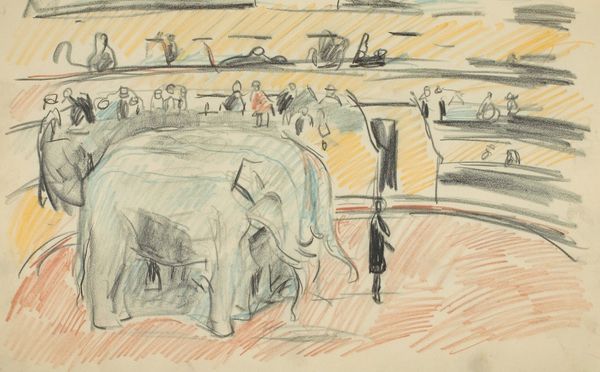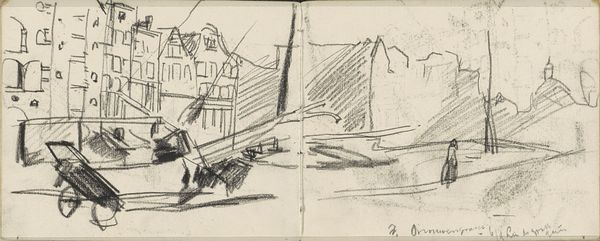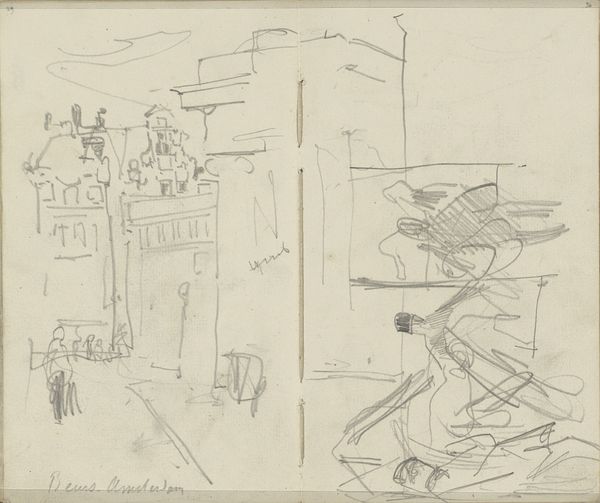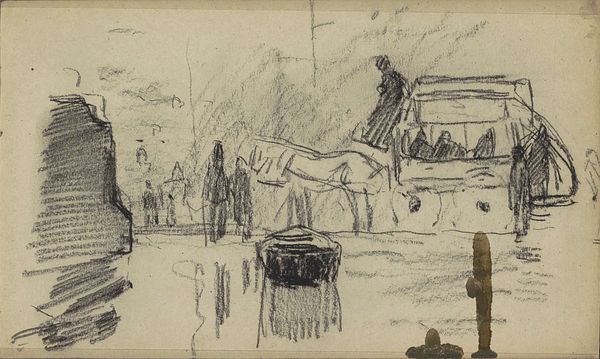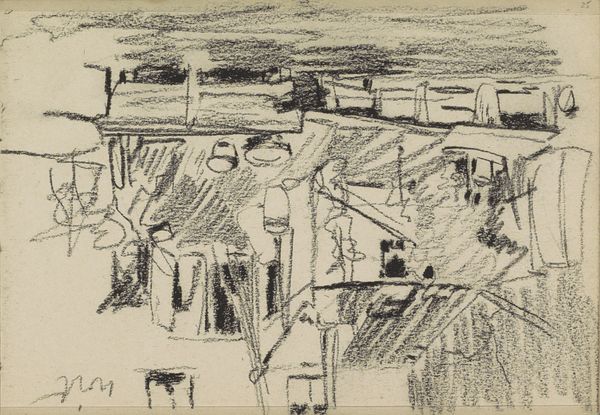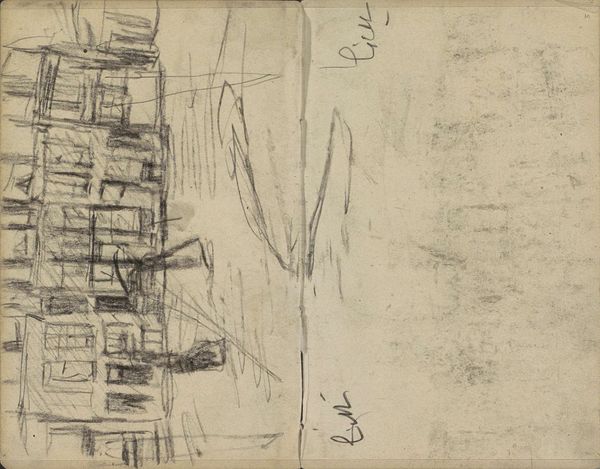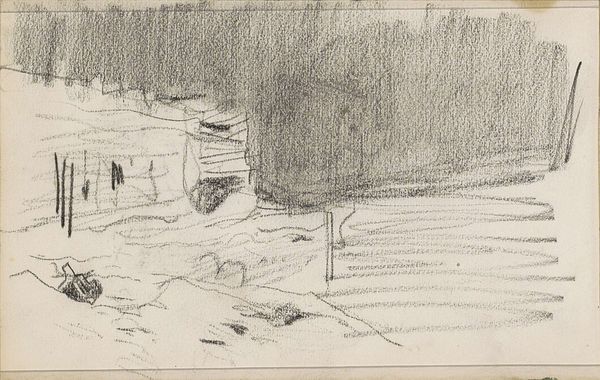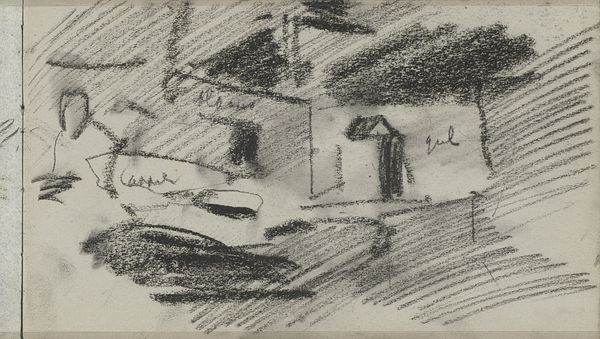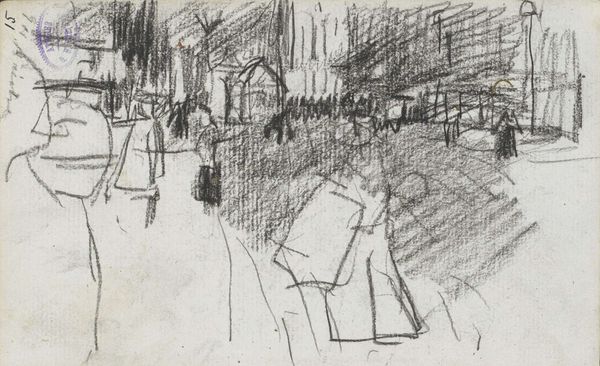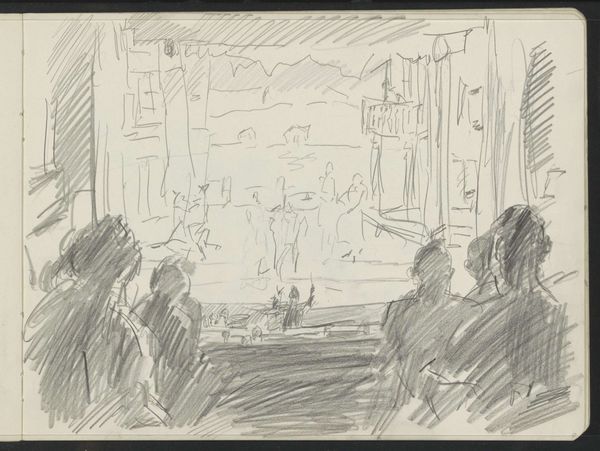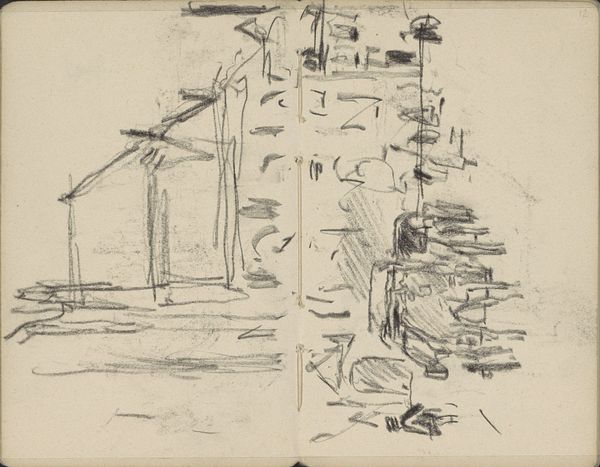
Copyright: Rijks Museum: Open Domain
Editor: We're looking at "Zittende figuren bij een kinderwagen" – "Sitting Figures by a Pram," made sometime between 1881 and 1927 by Johan Antonie de Jonge, using pencil and colored pencil. It’s mostly greyscale except for some light blues and yellows and reds. It has this quiet, almost melancholic mood about it, with the figures seemingly paused in their urban surroundings. How do you interpret this work? Curator: What immediately strikes me is the focus on the everyday, seen through the lens of social observation. De Jonge is capturing a scene from urban life, and as such the drawing becomes a document reflecting societal values around family and public space during that period. I am curious about the way that the drawing includes buildings in the background with an almost sketch like, unedited rendering, contrasted with the figures. Does this composition affect the meaning of the scene for you? Editor: Yes, definitely. It suggests a kind of layered observation. Almost as if he's sketching a social atmosphere in real-time. It really draws attention to the contrast between private life being carried out in public. The formal buildings create a serious atmosphere and also show what is considered important at that time, and family and informal activities such as socializing are an inherent element of those locations as well. Curator: Exactly. The buildings, with their stoic appearance, set a stage. De Jonge gives value to the informalities occurring in a formal landscape, capturing those moments, such as families coming together. The figures are given this grace amidst social change. We must ask, however, whose stories and figures are centered in the image and how might those on the margins of power at the time be impacted. This can change the impact of the image entirely. Editor: That's a crucial point, thinking about whose perspective is represented, especially in public spaces. It adds a deeper layer of social and political meaning to what I initially saw as a simple, quiet scene. Curator: Indeed. De Jonge’s work encapsulates both the beauty and the complexities of social interaction within a structured urban environment. Reflecting on this work has offered further thoughts on social responsibility. Editor: And it highlights the continuous and active evolution of societal power dynamics that affect people even now.
Comments
No comments
Be the first to comment and join the conversation on the ultimate creative platform.


